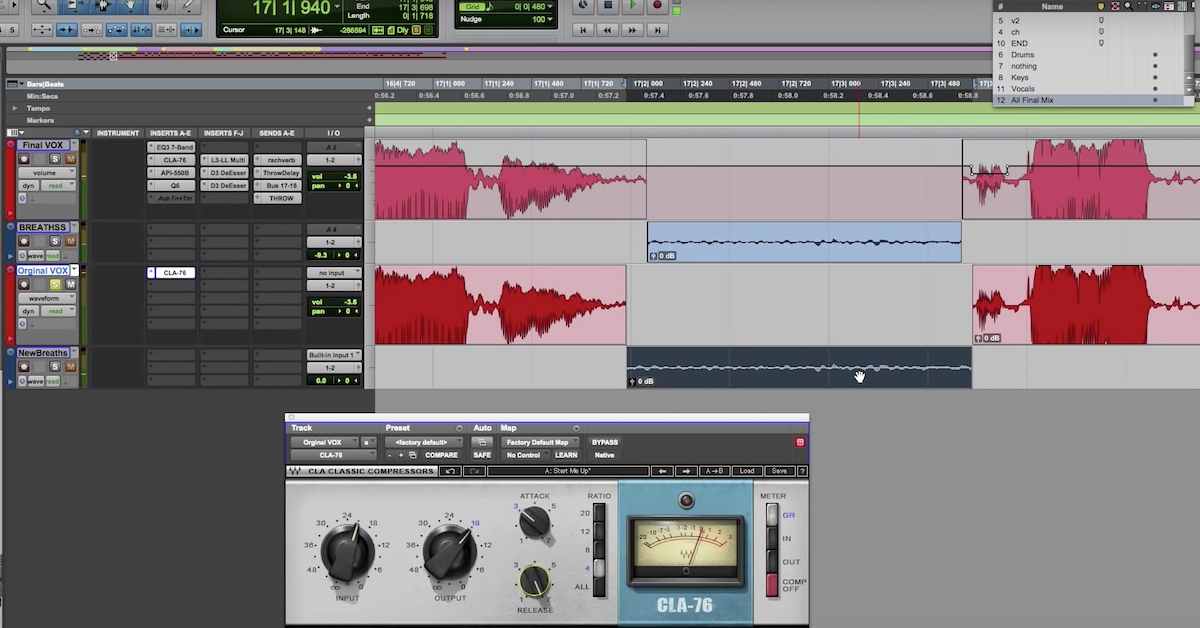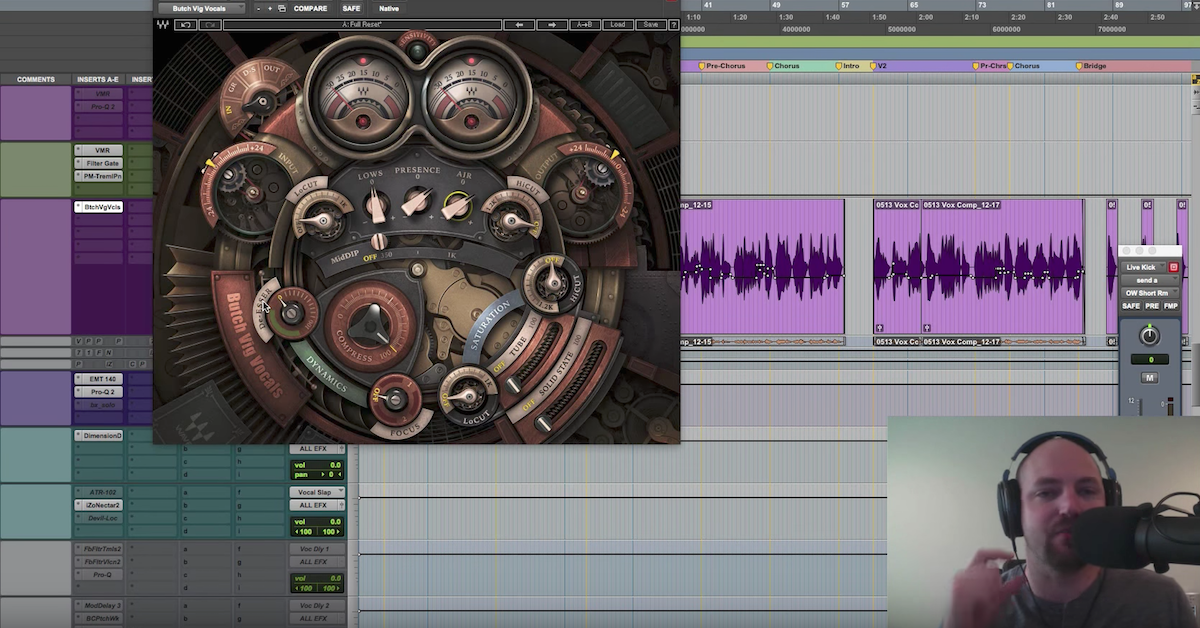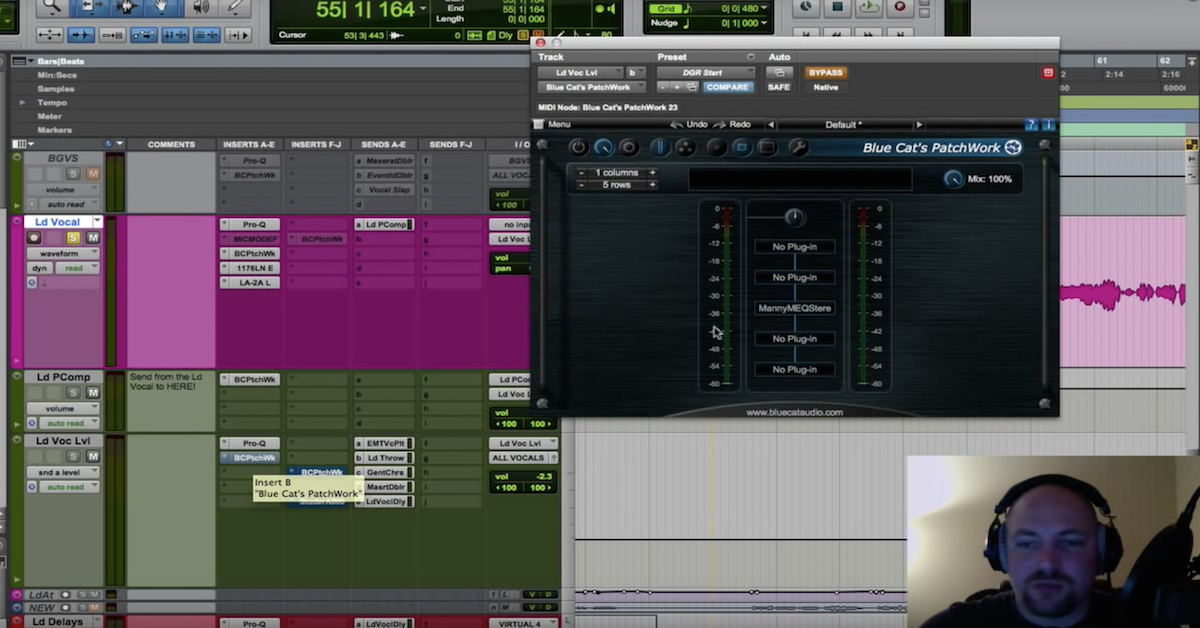Tips for Parallel De-essing Vocals in a Mix
I’m working on a song where I’m trying to bring the levels of the vocals up to cut through the rest of the music. I’ve added a compressor and an equalizer, but I’ve noticed that the sibilant parts of my song are too loud, almost to the point that they’re getting to be distracting.
This is where the de-esser is going to come in. What I’ll do first is play the vocals in the context of the music with the de-esser turned off, and then we’ll focus on the vocals by themselves.
Here’s how it sounds.
[mix]
Now let’s just isolate the vocals and listen for the ess sounds and also the “tuh” sounds.
[vocals]
So here, I’m just using a basic compressor to decrease the dynamic range, and then an equalizer to help it cut through more by bringing up some of the high frequencies.
The issue is, those kinds of processors working together are also going to make the sibilant sounds a little bit too loud. We need to bring them under control. This is where the de-esser is going to come in. I’m going to be using here the Fab-Filter Pro DS. I’ll show you the basic processing, and I’m going to show you some cool features about it that will open up some new opportunities for us to start doing parallel processing.
So here I’ll activate the plug-in, and show you the basic features. As with all de-essers, you’re going to be doing some dynamic range amplitude reduction, so we’re going to set some threshold where we want this to kick in. Then the range is the amount of reduction that we want. Then we’re going to use this filter here to figure out what frequency range we want to be listening for.
So we can audition that sound using this button here. Let me show you some of the features in action.
[vocals, adjusting Pro DS]
Another cool feature about the plug-in is it has this headphone button. What it allows us to do is just listen to the part that’s detecting as the sibilant sounds, or the ess sounds. It’s going to remove then, for us, all of the sounds that are voiced that we wouldn’t want to perform dynamic range reduction on.
[vocals, esses soloed]
Next, let me show you my idea for performing parallel processing.
So what I’m going to do here is duplicate this track. I’ve got the lead vocal on this one, click duplicate, we’re going to keep all of the processing in place to begin with.
My idea is to use one of the tracks as the regular voiced part of the singing performance, and this other track as the ess part. So I’m even going to name it here, “ess.”
So because we have this auditioning button that allows us just to hear the sibilant sounds, I’m going to keep that button on for this plug-in. Then I’m going to go over here to the original one, and I’m going to turn it off. We’re going to crank the range all the way up. Now we’re performing the maximum amount of gain reduction on the sibilant sounds, on the ess sounds.
So this track by itself is going to be almost exclusively the voice part of the singing performance. This one is going to be, then, just the ess sounds.
Now we can control their relative level here by using the channel fader, and then we can also think about how we want to process them independently. So let’s just listen to these separately.
[vocals, de-essed, then esses]
Alright, so one idea that I have is now that we’re removing a lot of the high frequency content, we can even bring up the level more for the part here that’s on the voice track.
So we want those parts of the vocals to cut through more, and make them extra bright. We don’t have to worry as much about those sibilant sounds being out of control.
Then what we’ll do is we’ll come over to the ess track where we’ve got those esses and “tuhs” and “cuhs” going on. Let’s back the high frequencies off. In fact, let’s roll them off so that now, it’s much darker.
This is going to mean that it doesn’t end up being as piercing compared to how it was before.
So now let’s listen to these things together.
[vocals, parallel de-essed]
Alright, now in the context of the full mix.
[mix]
So that’s how you can use parallel processing to de-ess your vocals, and gain greater control over them.
Until next time, take care, guys.





